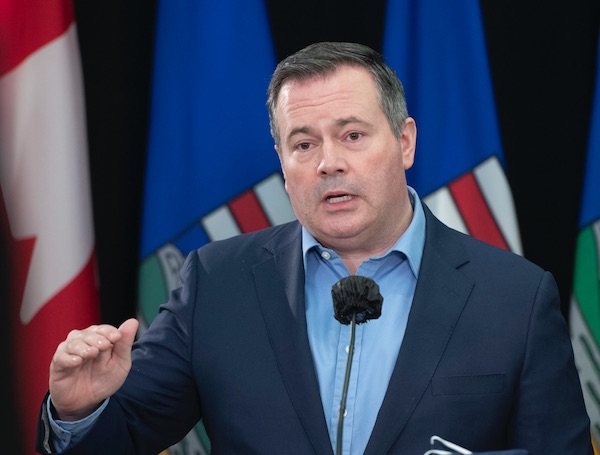Alberta
Province provides over $68 Million for extra staff in continuing care, addiction and mental health treatment facilities

From the Province of Alberta
Increasing protection for vulnerable Albertans
Alberta’s government is providing $68.5 million to protect vulnerable Albertans and staff in continuing care and residential addiction and mental health treatment facilities, as well as home care clients, from COVID-19.
This one-time funding will support operators of non-contracted licensed supportive living and both contracted and non-contracted home care, hospices and residential addiction and mental health treatment centres.
It will help operators pay for increased staffing, additional cleaning supplies and personal protective equipment.
“We must do everything possible to protect vulnerable Albertans and the workers supporting them from COVID-19. Today’s $68.5 million in support for continuing care homes is on top of $260 million that Alberta’s government has already provided to help caregivers support vulnerable seniors throughout the pandemic.”
“I am pleased to announce steps to help protect this sector. We know how important these services are to Albertans who live in these facilities and their families, as well as for those who are cared for at home. Alberta’s government will continue to support services that are essential to the health and well-being of Albertans throughout this pandemic.”
“I have heard loud and clear from the continuing care sector that remaining in compliance with public health orders can be costly. This funding will help operators further protect those most at risk of severe outcomes.”
“I am pleased that the Government of Alberta has taken this positive step to recognize the actions taken by operators who have stepped up and taken responsibility for the care of older Albertans throughout the pandemic. This funding recognizes the importance of this ongoing work.”
Funding to support operators providing essential services varies by sector and will be calculated based on the number of spaces in each facility or on an hourly basis for home care:
- $48 million for non-contracted licensed supportive living
- $9.9 million for residential addiction and mental health treatment facilities
- $9.6 million for home care
- $1 million for residential community hospice
Organizations operating during the period of March 15, 2020 to March 31, 2021 will be eligible.
Alberta’s government is responding to the COVID-19 pandemic by protecting lives and livelihoods with precise measures to bend the curve, sustain small businesses and protect Alberta’s health-care system.
Quick facts
- Information on how to apply for funding will be posted on alberta.ca in the coming weeks.
- Alberta has provided more than $260 million in funding to protect staff and residents in long-term care, designated supportive living facilities and seniors lodges from COVID-19.
- This includes more than $87.6 million that has been provided to operators to top-up the wages of health-care aides and health care aide staffing levels and provide paid practicums for students to fast-track them through certification.
Alberta
Made in Alberta! Province makes it easier to support local products with Buy Local program

Show your Alberta side. Buy Local. |
When the going gets tough, Albertans stick together. That’s why Alberta’s government is launching a new campaign to benefit hard-working Albertans.
Global uncertainty is threatening the livelihoods of hard-working Alberta farmers, ranchers, processors and their families. The ‘Buy Local’ campaign, recently launched by Alberta’s government, encourages consumers to eat, drink and buy local to show our unified support for the province’s agriculture and food industry.
The government’s ‘Buy Local’ campaign encourages consumers to buy products from Alberta’s hard-working farmers, ranchers and food processors that produce safe, nutritious food for Albertans, Canadians and the world.
“It’s time to let these hard-working Albertans know we have their back. Now, more than ever, we need to shop local and buy made-in-Alberta products. The next time you are grocery shopping or go out for dinner or a drink with your friends or family, support local to demonstrate your Alberta pride. We are pleased tariffs don’t impact the ag industry right now and will keep advocating for our ag industry.”
Alberta’s government supports consumer choice. We are providing tools to help folks easily identify Alberta- and Canadian-made foods and products. Choosing local products keeps Albertans’ hard-earned dollars in our province. Whether it is farm-fresh vegetables, potatoes, honey, craft beer, frozen food or our world-renowned beef, Alberta has an abundance of fresh foods produced right on our doorstep.
Quick facts
- This summer, Albertans can support local at more than 150 farmers’ markets across the province and meet the folks who make, bake and grow our food.
- In March 2023, the Alberta government launched the ‘Made in Alberta’ voluntary food and beverage labelling program to support local agriculture and food sectors.
- Through direct connections with processors, the program has created the momentum to continue expanding consumer awareness about the ‘Made in Alberta’ label to help shoppers quickly identify foods and beverages produced in our province.
- Made in Alberta product catalogue website
Related information
Alberta
Province to expand services provided by Alberta Sheriffs: New policing option for municipalities

Expanding municipal police service options |
Proposed amendments would help ensure Alberta’s evolving public safety needs are met while also giving municipalities more options for local policing.
As first announced with the introduction of the Public Safety Statutes Amendment Act, 2024, Alberta’s government is considering creating a new independent agency police service to assume the police-like duties currently performed by Alberta Sheriffs. If passed, Bill 49 would lay additional groundwork for the new police service.
Proposed amendments to the Police Act recognize the unique challenges faced by different communities and seek to empower local governments to adopt strategies that effectively respond to their specific safety concerns, enhancing overall public safety across the province.
If passed, Bill 49 would specify that the new agency would be a Crown corporation with an independent board of directors to oversee its day-to-day operations. The new agency would be operationally independent from the government, consistent with all police services in Alberta. Unlike the Alberta Sheriffs, officers in the new police service would be directly employed by the police service rather than by the government.
“With this bill, we are taking the necessary steps to address the unique public safety concerns in communities across Alberta. As we work towards creating an independent agency police service, we are providing an essential component of Alberta’s police framework for years to come. Our aim is for the new agency is to ensure that Albertans are safe in their communities and receive the best possible service when they need it most.”
Additional amendments would allow municipalities to select the new agency as their local police service once it becomes fully operational and the necessary standards, capacity and frameworks are in place. Alberta’s government is committed to ensuring the new agency works collaboratively with all police services to meet the province’s evolving public safety needs and improve law enforcement response times, particularly in rural communities. While the RCMP would remain the official provincial police service, municipalities would have a new option for their local policing needs.
Once established, the agency would strengthen Alberta’s existing policing model and complement the province’s current police services, which include the RCMP, Indigenous police services and municipal police. It would help fill gaps and ensure law enforcement resources are deployed efficiently across the province.
Related information
-

 Alberta12 hours ago
Alberta12 hours agoProvince to expand services provided by Alberta Sheriffs: New policing option for municipalities
-

 Bruce Dowbiggin7 hours ago
Bruce Dowbiggin7 hours agoIs HNIC Ready For The Winnipeg Jets To Be Canada’s Heroes?
-

 2025 Federal Election9 hours ago
2025 Federal Election9 hours agoCSIS Warned Beijing Would Brand Conservatives as Trumpian. Now Carney’s Campaign Is Doing It.
-

 2025 Federal Election11 hours ago
2025 Federal Election11 hours agoNo Matter The Winner – My Canada Is Gone
-

 Alberta10 hours ago
Alberta10 hours agoMade in Alberta! Province makes it easier to support local products with Buy Local program
-

 Health8 hours ago
Health8 hours agoHorrific and Deadly Effects of Antidepressants
-

 2025 Federal Election2 days ago
2025 Federal Election2 days agoThe “Hardhat Vote” Has Embraced Pierre Poilievre
-

 COVID-192 days ago
COVID-192 days agoThe Pandemic Justice Phase Begins as Criminal Investigations Commence


